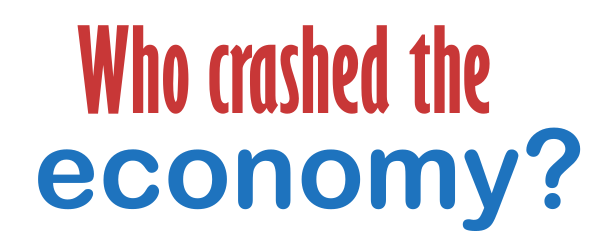The fall in the number of home loan approvals continue to accelerate with a 7.9 percent fall in January, the biggest fall for a decade. This follows a revised 5.1 per cent drop in December.
As we highlighted in last month’s post, No ‘pent up’ demand for Mortgage Approvals, it appears house prices lag mortgage applications. Falls in 2003 and 2008 resulted in falls in house prices.
The next coming months will be crunch time for the Australian Housing Asset Bubble. While demand for Australians buying our own housing is falling, cashed up Chinese land bankers may be able to keep our market on life support. We are also getting close to a May budget and being an election year, no doubt the government will do everything in its control to prevent falls.
Many of the stimulus measures put in place in 2008 during the GFC are winding down, and as expected they could only delay the inevitable. If Australian households were spending beyond their means in 2008, governments throwing more spending money was never going to make the problem sustainable. In fact the generous First Home Buyer Grants only helped fuel the household debt bubble, helping us to break through the $1 trillion mark and throwing more households into mortgage stress at a time of record low interest rates.
» Home loans slump most in a decade – The Sydney Morning Herald, 10th March 2010.

A pyramid scheme only works when people keep buying in at the bottom. Given the result above only had a split of 10% first home buyers (lowest % of first home buyers on record) it would seem that supply of people willing to be a building block at the bottom of the pyramid is drying up.
The fact that buying your first home is referred to as “getting on the property ladder” is a grand indication of the ponzi scheme our property market has become.
Investors (both local mum’s and dad’s and Asian) might be propping up the market for now, however it is very clear that rental yields are too.
Election year policy should ensure that prices either continue to grow, or plateau, but no government will want to go to the polls with falling property prices.
My personal opinion is that prices will reach a point where incomes and rental yields are so out of whack it stops double digit growth in property prices. When this point is reached, prices will stagnate for maybe a decade and allow wages and rental yields to bounce back. I dare say that we are close to approaching this point now (and probably would already be 12 months down the track had the first home buyers grant not been increased).
What we also need to keep in mind is that the greater the gap between purchase price, and rental price, the greater the negative equity an investor can claim. The current cost of negative gearing is estimated to cost the federal budget about $6 billion per year. Naturally this cost will increase overtime if the property market turns to be more investor focused with further dwindling rental yields (due to rapid price growth). Does anyone really think a government will allow such a scheme to cost $12 billion per annum in a decades time when there will be funding pressures from health, education and infrastructure?
This is a great blog, with some great graphs and general information and analysis. Thanks for sharing it. Just a minor point, perhaps change on the graph ‘Mortgage Applications’ to ‘Mortgage Approvals’? I had someone question it when I shared.
When do you think the “best” time to buy Australian property will be? This year or next?
Matt, valid point. I’ve fixed it up.
Gavin, It’s my opinion that many people under-estimate the sheer size of this asset bubble. If we assume this is the tipping point, then it would be fair to say the bottom won’t occur for quite some years. As other countries have seen, there is a limit to how quickly house asset prices fall. I would expect to see falls of up to 15% a year over say three years after which it should slow in its decent and continue like this for maybe another 7 or more years. However as we have seen, governments may intervene, temporarily delaying such falls.
The other assumption is this is the tipping point. We have been in this position numerous times before. While approvals for home loans to our citizens have plunged, it doesn’t mean money can’t flow into our real estate from cashed up overseas buyers. With housing in China at astronomical highs, and our economy perceived to be “strong”, it does make our housing an ideal target. The only thing that may derail this, is a crash in China’s real estate bubble. Many investors in China have only ever known housing going up, hence land banking for capital gains without retail yield makes some sense. When they find out otherwise, they will probably head for the exit. Watch China’s credit growth (http://www.chinadaily.com.cn/bizchina/2010-03/11/content_9573712.htm) – They have been restricting credit to their overheated property market as well.
There could also be a surprise in the May budget. It is an election year 🙂